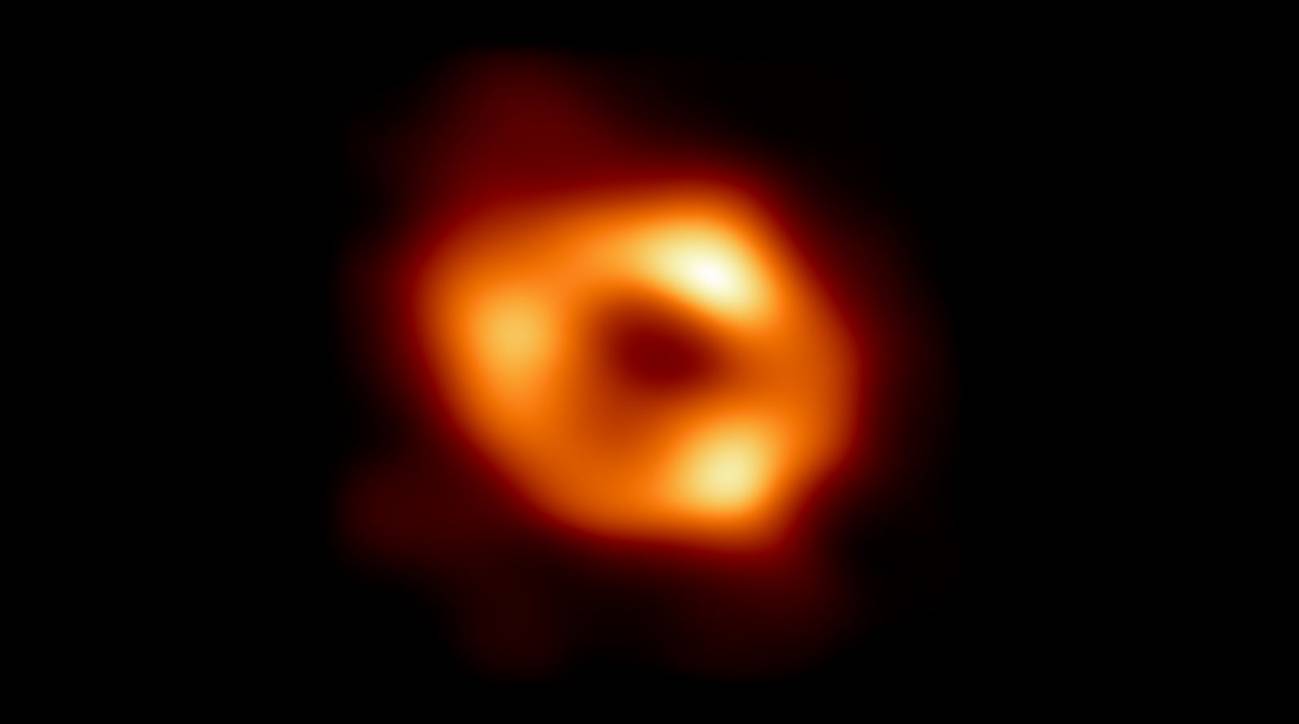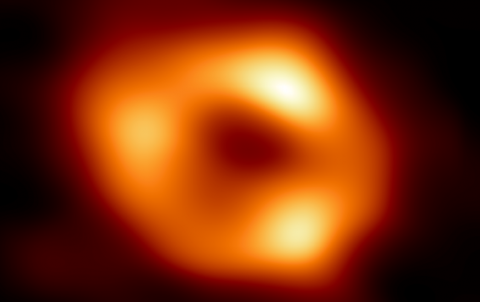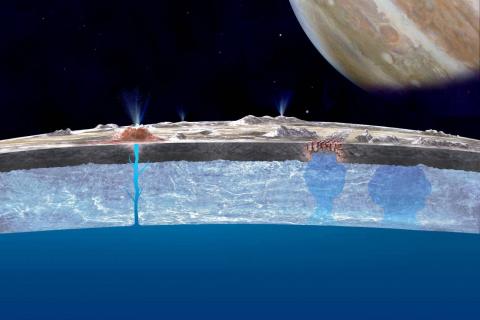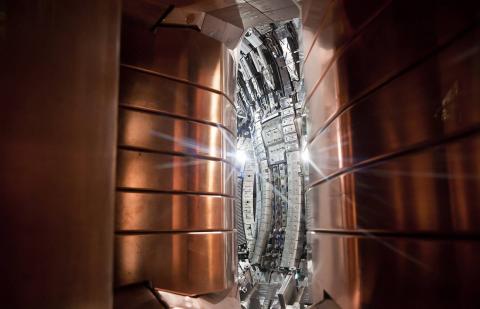What is a black hole?
It is an astronomical object with a gravitational force so strong that nothing, not even light, can escape from it. As NASA explains, the "surface" of a black hole is called the event horizon. This horizon defines the boundary where the velocity needed to escape from the hole exceeds the speed of light (which is the speed limit in the cosmos). Matter and radiation are trapped but cannot escape.
This horizon is not a material surface, but an imaginary outer limit, a point of no return: everything that crosses this limit falls into the interior, according to the Spanish Society of Astronomy.
What types of black holes are there?
Two kinds of black holes have been studied in depth. Stellar-mass black holes, from three to dozens of times the mass of the Sun, are spread throughout our Milky Way galaxy. The other group would be supermassive objects that weigh between 100,000 to billions of solar masses and are found in the centers of most large galaxies, including our own. This is the case of Sagittarius A* (or SgrA*).
In addition, a third class called intermediate-mass black holes, ranging in weight from 100 to more than 10,000 solar masses, has been detected. On May 21, 2019, the Laser Interferometer Gravitational-Wave Observatory (LIGO) detected gravitational waves from a merger between two stellar-mass black holes; this event, called GW190521, created a black hole weighing 142 suns.
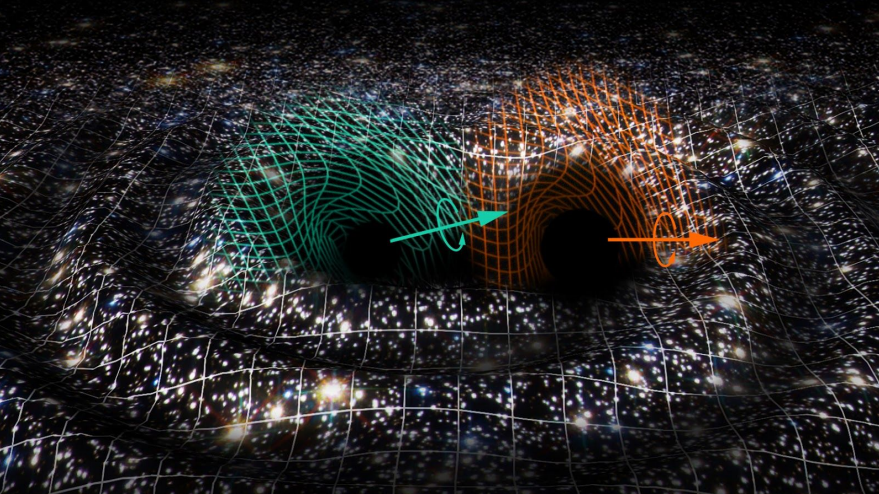
How do they originate?
A stellar-mass black hole forms when a star of more than 20 solar masses exhausts the fuel in its core and collapses toward its own gravitational center. The collapse triggers a supernova explosion that ejects the outer layers of the star. But if the crushed core contains more than three times the mass of the Sun, no force can stop it from collapsing into a black hole. Little is known about the origin of supermassive black holes, but they are known to exist from the earliest days of a galaxy's life.
Once formed, black holes grow by the accretion of the matter they trap, including gas shed from neighboring stars and even other black holes.
Where is Sagittarius A* located?
The closest supermassive black hole to Earth, named Sagittarius A* or SgrA*, is located 26,000 light-years away at the center of the Milky Way galaxy. This gravitational monster, with a mass four million times that of the Sun, is surrounded by a small group of stars orbiting around it at high speed, as reported by the European Southern Observatory (ESO).
This extreme environment - the strongest gravitational field in our galaxy - is the perfect place to explore the physics of gravity and, in particular, to test Albert Einstein's theory of general relativity.
When was it discovered?
As the Instituto de Astrofísica de Andalucía (IAA-CSIC) explains in an article published by Silbia López de Lacalle, although the object we know today as Sagittarius A* was discovered in 1974, "it took decades for this point object detected by radio telescopes in the central regions of the Milky Way to be confirmed as a supermassive black hole".
At the end of the last century a first evidence was obtained, thanks to the study of the motion of nearby stars: not only did they detect extreme velocities (1,500 kilometers per second) in very small orbits around SgrA*, but they also found that the velocity of the stars increased towards the vicinity of the object, "which is a clear indication that they are under the influence of a very intense gravitational field that must also be caused by a very compact object," according to López de Lacalle.
In 2002, the orbit of the star S2 was determined, which draws a very pronounced ellipse around SgrA*. "Thanks to the data on stellar orbits (and others obtained with radio telescope networks) it was possible to calculate the mass of Sagittarius A*, which is equivalent to about four million suns, and it was confirmed that it is contained in a very small volume]. There was no longer any doubt: they had found the central black hole of the Milky Way", says the scientist. The discovery of this black hole was awarded the Nobel Prize in Physics in 2020.
Has any image of a black hole ever been obtained?
Yes, twice. On April 10, 2019, researchers at the Event Horizon Telescope (EHT) showed the first direct visual evidence of a supermassive black hole and its shadow. The image shows the black hole at the center of Messier 87 (M87), a massive galaxy located in the relatively nearby Virgo cluster of galaxies. This black hole is located 55 million light-years from Earth and is 6.5 billion times more massive than the Sun.
To achieve this image, signals from eight radio telescopes around the planet were connected to form a virtual telescope the size of the Earth with unprecedented sensitivity and resolution, as reported by the SINC agency. Several teams of Spanish astronomers participated in the historic milestone, including the Spanish observatory IRAM from Sierra Nevada.
The second photograph taken by the EHT was presented on May 12, 2022. In this case, it corresponds to Sagittarius A*, the supermassive black hole at the center of the Milky Way. This result is overwhelming evidence that the object is indeed a black hole and provides clues about the workings of these giants, which are believed to reside at the center of most galaxies.
Again, the image was obtained by a global research team, using observations with a worldwide network of radio telescopes, which functions as a virtual telescope the size of Earth. The results were published in a special issue of The Astrophysical Journal Letters.
What do gravitational waves have to do with black holes?
Their finding was another revolutionary milestone that earned their discoverers a Nobel Prize in 2017 and quite an example of international collaboration. When black holes collide with each other, they cause such a violent phenomenon that their echo is able to reach us billions of years later through gravitational waves.
The first recorded finding came in 2015 when scientists first detected gravitational waves, the same ripples in the fabric of space-time predicted a century earlier by Albert Einstein, in his general theory of relativity. LIGO detected the waves from an event 1.3 billion years ago, known as GW150914, in which two black holes spiraled around each other as they merged. Since then, through the study of gravitational waves, LIGO and others have been able to detect the gravitational waves.
Can a black hole really emit nothing?
In the 1970s, astrophysicist Stephen Hawking predicted that a black hole could spontaneously emit pairs of particles. According to his theory, one of them would be swallowed by the hole but the other would escape outward, which an outside observer would see as a spontaneous emission of radiation from the hole.
"The problem is that this emission is very weak. If we associate a temperature to this spectrum, it would be very small, so detecting it is an almost impossible task," said Juan Ramón Muñoz de Nova, a researcher in the Department of Materials Physics at the Complutense University of Madrid (UCM) and the Israel Institute of Technology (Technion) in a press release.
